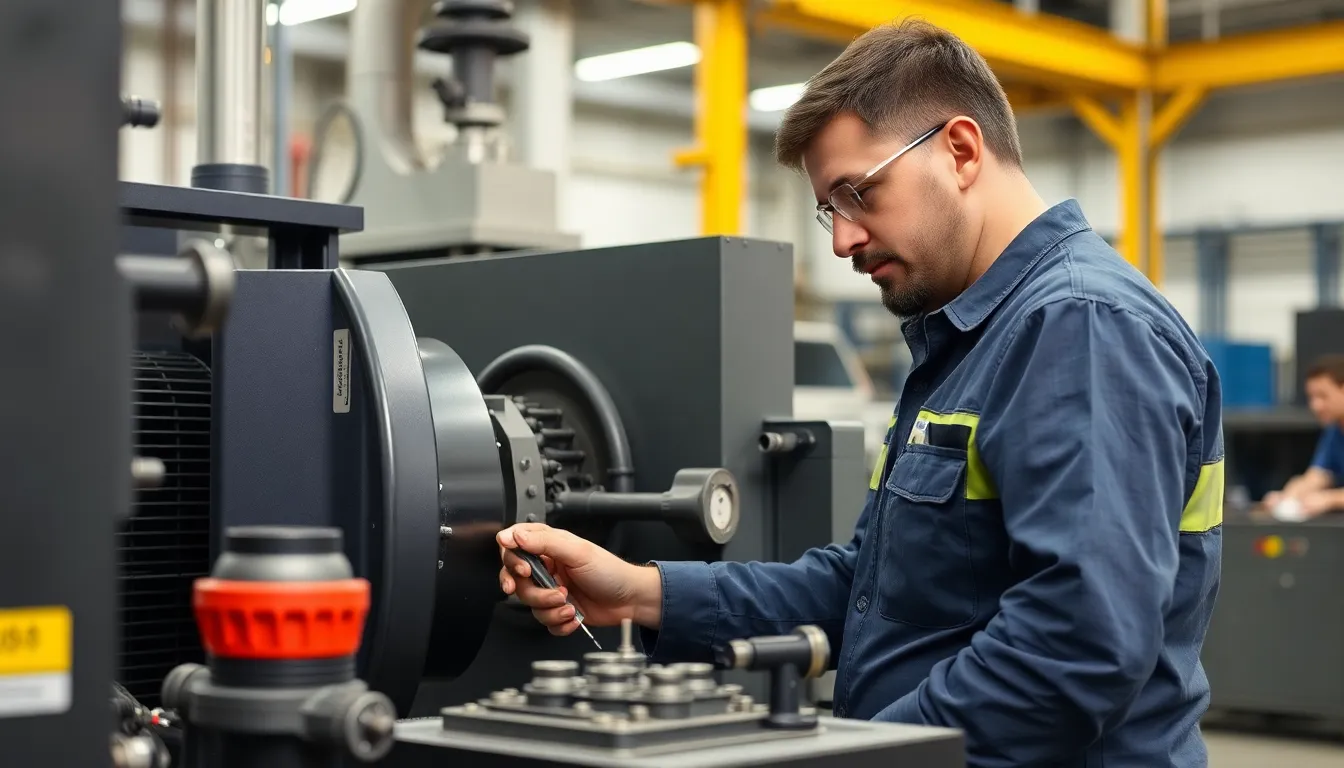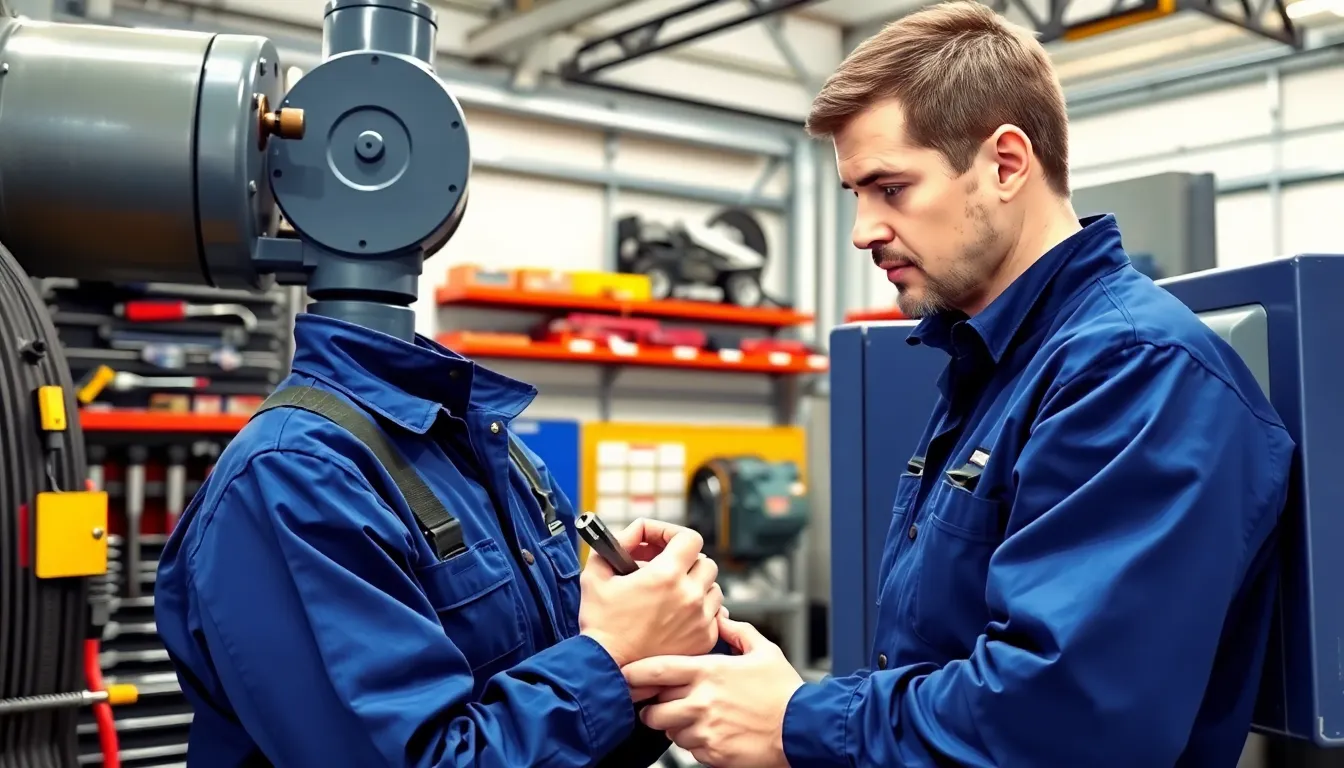Table of Contents
ToggleEvery year, like clockwork, people promise themselves they’ll finally get organized, eat healthier, or maybe even take that long-awaited vacation. But what about the unsung hero of home and business upkeep? Annual preventive maintenance is the secret sauce that keeps everything running smoothly, saving time and money in the long run. Think of it as a spa day for your appliances and systems—who doesn’t love a little pampering?
Understanding Annual Preventive Maintenance
Annual preventive maintenance plays a crucial role in ensuring the longevity and efficiency of home and business systems. This practice helps avoid costly repairs and unexpected downtimes.
Definition and Importance
Annual preventive maintenance refers to regular inspections and servicing of essential systems and appliances. This proactive approach prevents potential failures, extending the lifespan of equipment. Organizations that prioritize these maintenance tasks save both time and money by identifying issues early. Effective scheduling of maintenance enhances operational efficiency. Maintaining appliances and systems on an annual basis enhances safety and optimizes energy use.
Key Components
Key components of annual preventive maintenance include inspections, servicing, and documentation. Regular inspections identify wear and tear, ensuring all systems function correctly. Servicing involves cleaning, lubricating, and adjusting components as needed to maintain peak performance. Documentation tracks maintenance activities, providing insights into trends and enabling informed decisions regarding future upkeep. By focusing on these components, individuals and businesses can ensure their systems remain reliable and efficient throughout the year.
Benefits of Annual Preventive Maintenance

Annual preventive maintenance offers numerous advantages for both homes and businesses. Effective upkeep contributes significantly to overall efficiency and operational reliability.
Cost Savings
Cost savings represent a key benefit of annual preventive maintenance. Investing in regular inspections and servicing prevents unexpected breakdowns, which often lead to high repair costs. Avoiding major repairs translates into reduced expenses over time. Data from industry studies show that organizations can save up to 30% on repair costs through proactive maintenance strategies. Additionally, maintaining optimal system performance leads to energy savings, lowering utility bills. Regular upkeep safeguards investments by ensuring equipment functions efficiently, eliminating extra expenses associated with poor maintenance.
Increased Equipment Lifespan
Increased equipment lifespan is another crucial advantage of annual preventive maintenance. By conducting routine inspections, wear and tear on machinery can be identified early. This proactive approach allows for timely repairs or replacements, minimizing equipment failure. Regular maintenance has been shown to extend equipment life by an average of 20%, according to maintenance management statistics. Enhanced operational reliability results from thoughtful care, which ultimately leads to decreased downtime. Prioritizing preventive maintenance ensures that equipment continues to perform effectively, benefitting productivity and overall operational efficiency.
Developing an Annual Preventive Maintenance Plan
An effective annual preventive maintenance plan requires a structured approach. Prioritize assessing equipment needs to ensure all critical systems receive adequate care.
Assessing Equipment Needs
Identify essential equipment and systems that require maintenance. Regularly evaluate the condition of appliances, machinery, and infrastructure to determine priority levels. Each asset might demand different levels of inspection and servicing, based on age and usage. Create a detailed list of components needing attention, documenting previous issues and current performance. Gather insights from team members who operate the systems daily, as their feedback often reveals hidden problems. Building this foundation enhances planning and resource allocation for future maintenance tasks.
Scheduling and Frequency
Establish a consistent schedule for maintenance activities. Frequent inspections ensure timely detection of potential issues. Assign maintenance tasks based on equipment needs and frequency of use; high-use items might require quarterly checks while others may need annual oversight. Use a calendar or a software tool to track due dates, ensuring nothing falls through the cracks. Incorporating flexibility helps accommodate unexpected repairs or urgent needs. Prioritizing maintenance scheduling helps organizations maintain operational efficiency and reliability throughout the year.
Implementation Strategies
Implementing effective annual preventive maintenance involves training staff and utilizing maintenance management software to enhance operations.
Staff Training
Training staff on maintenance procedures ensures everyone understands their role in the upkeep process. Knowledgeable employees can identify issues early, leading to quicker resolutions. Formal training sessions and regular workshops keep teams updated on best practices. Providing hands-on demonstrations enhances skill sets and builds confidence. Regular assessments help reinforce training effectiveness and highlight areas for improvement. When employees know the importance of their tasks, they’re more likely to prioritize preventive maintenance and contribute to overall operational reliability.
Using Maintenance Management Software
Maintenance management software streamlines scheduling and tracking of maintenance tasks. It centralizes documentation, making it easy to reference previous inspections and services. Automated reminders help ensure timely maintenance without relying on manual tracking. Real-time dashboards provide visibility into the status of various systems, aiding prioritization of tasks. Analytics and reports generated by the software identify trends in equipment performance, informing future decisions. Integrating this technology not only increases efficiency but also supports proactive maintenance efforts throughout the year.
Annual preventive maintenance is a vital investment for both homes and businesses. By prioritizing regular inspections and servicing, individuals can significantly reduce repair costs and enhance the lifespan of their systems. This proactive approach not only ensures reliability but also promotes efficiency, leading to lower utility bills and improved productivity.
Implementing a structured maintenance plan can streamline operations and prevent unexpected breakdowns. Training staff and utilizing maintenance management software further enhance these efforts, ensuring everyone is equipped to contribute effectively. Overall, committing to annual preventive maintenance is a strategic decision that pays dividends in the long run.








